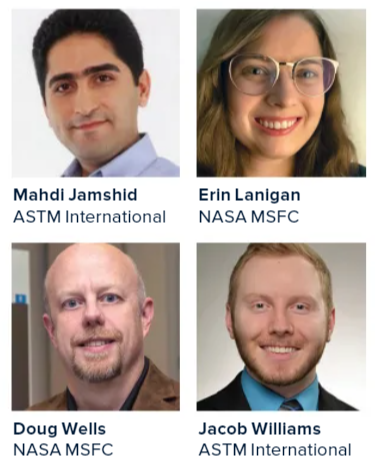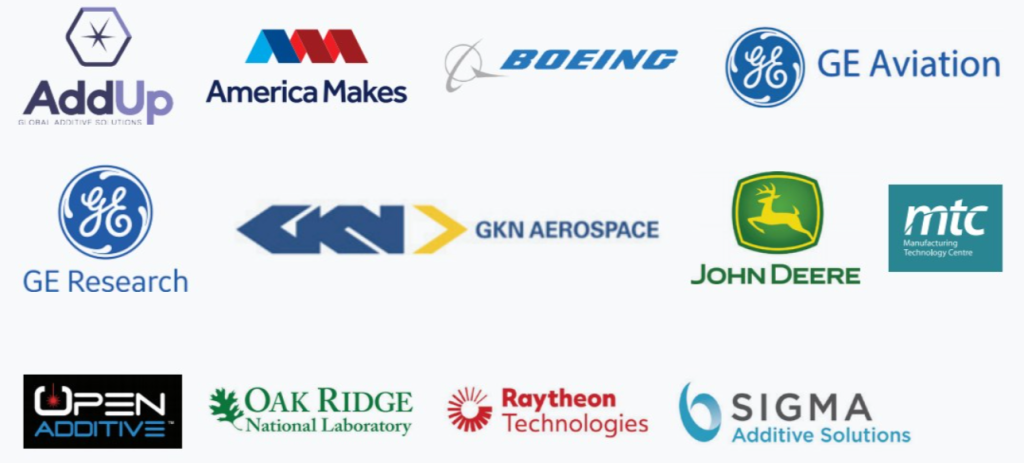Global standards organization ASTM International has released its Strategic Guide: Additive Manufacturing In-Situ Technology Readiness report.
This detailed report is the product of a workshop series held in June 2022. This workshop was organized by the ASTM Additive Manufacturing Center of Excellence (AM CoE) and sponsored by NASA and America Makes. The report focuses on understanding the existing gaps and challenges in in-situ technology. The report offers a comprehensive analysis of workshop discussions, outcomes, and proposed solutions for addressing key areas in in-situ technology.
“The report embodies a comprehensive landscape assessment, detailed workshop analyses, targeted expert interviews, and crucial reviews by specialists, all meticulously orchestrated to create an insightful, high-value resource that the industry can tap into,” says Dr. Mohsen Seifi, Vice President of Global Advanced Manufacturing Programs at ASTM International. “The strategic insights will also guide ASTM International and its members to bridge gaps in existing standards and pioneer new standardization in the field.”

In-situ monitoring technologies enable quality control and defect detection
In-situ monitoring technologies enable the measurement and tracking of parameters throughout the manufacturing process. These technologies play a crucial role in process control, ensuring that the produced parts meet the required quality standards. Additionally, early detection of potential defects through in-situ monitoring helps prevent the production of faulty parts.
In-situ monitoring encompasses various technologies, with thermal monitoring being one of the first methods. Thermal monitoring involves measuring the temperatures of the build plate, molten material, and the surrounding environment. This data is utilized to regulate the temperature during the build process and detect any hotspots that may result in defects.
Next up is optical monitoring, which utilizes cameras to observe the build progress and detect possible defects. It can also measure the size and shape of the produced parts. Another technique, ultrasonic monitoring, employs ultrasonic waves to assess the properties of the molten material. This data aids in process control and facilitates the identification of any possible defects.
The choice of an appropriate in-situ monitoring technology relies on the particular AM process and the desired monitoring requirements. For instance, thermal monitoring may be suitable when the AM process is highly temperature-sensitive. On the other hand, optical monitoring may be a suitable choice when the AM process involves the production of complex geometries.
“The strategic guide that the team has compiled will serve as a beneficial resource for members of the AM community for years to come,” notes Dr. Brandon Ribic, Technology Director with America Makes. “The data and findings are a great example of collaboration to promote common understanding. They deliver an approach that advances our ability to leverage monitoring methods and digital data and analytics for AM qualification and certification.”

Challenges and solutions for in-situ monitoring technologies in additive manufacturing
During the workshop, professionals from academia, industry, and government congregated to exchange insights on the recent progress in in-situ monitoring technologies for additive manufacturing. The participants collectively recognized several significant gaps and challenges in the field.
The initial challenge revolves around the absence of standardized practices for in-situ monitoring technologies. The lack of a unified standard hampers the comparison of different technologies and the compatibility of data from various sources. Another challenge lies in the limited availability of data concerning the performance of in-situ monitoring technologies across different AM processes and materials. This scarcity of data poses difficulties in evaluating the effectiveness of these technologies and selecting the most suitable option for specific applications.
Furthermore, there is the issue of high costs associated with in-situ monitoring technologies, which can act as a barrier for small and medium-sized businesses to adopt them. Moreover, these technologies can prove complex to install and operate, often necessitating specialized expertise and training.
In light of these challenges, the report also highlights several possible solutions. Firstly, it emphasizes the importance of developing standards specifically for in-situ monitoring technologies. Such standards would facilitate comparisons between different technologies and ensure the compatibility of data from diverse sources. Secondly, the report emphasizes the need for an expanded collection of data regarding the performance of in-situ monitoring technologies across various additive manufacturing processes and materials. This increased data availability would enhance the comprehension of these technologies and contribute to their overall effectiveness.
Another area of focus is the need to address the cost aspect. By reducing the expenses associated with in-situ monitoring technologies, their accessibility can be extended to small and medium-sized businesses. Additionally, simplifying the installation and operation processes would enhance user-friendliness and minimize the requirement for specialized training and expertise.
Despite these challenges, there is a growing interest in in-situ monitoring technologies for AM. As these technologies progress, there is a potential for significant advancements in AM, leading to improved efficiency, reliability, and cost-effectiveness, says ASTM International.
What does the future of 3D printing for the next ten years hold?
What engineering challenges will need to be tackled in the additive manufacturing sector in the coming decade?
To stay up to date with the latest 3D printing news, don’t forget to subscribe to the 3D Printing Industry newsletter or follow us on Twitter, or like our page on Facebook.
While you’re here, why not subscribe to our Youtube channel? Featuring discussion, debriefs, video shorts, and webinar replays.
Are you looking for a job in the additive manufacturing industry? Visit 3D Printing Jobs for a selection of roles in the industry.
Featured image shows ASTM International releases Strategic Guide: Additive Manufacturing In-Situ Technology Readiness report. Image via ASTM International.



